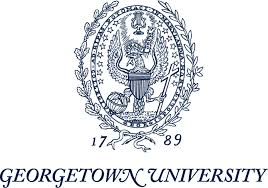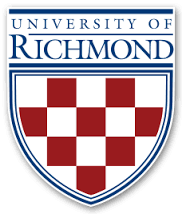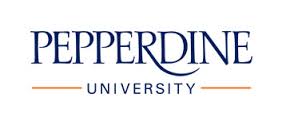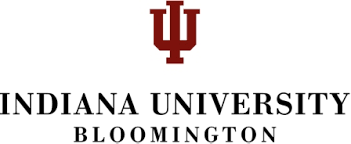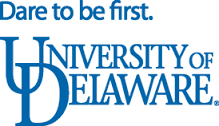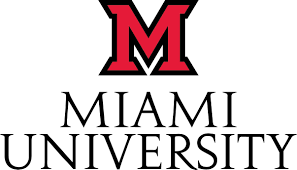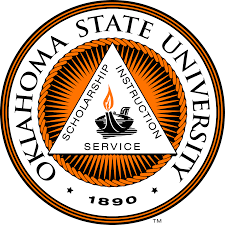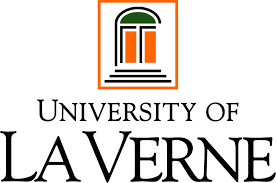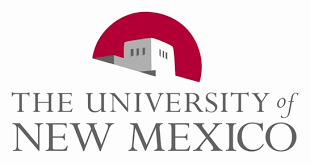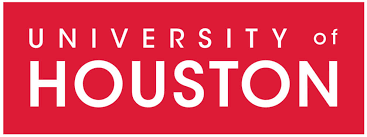Rooted in classical antiquity, liberal arts education provides an insightful overview of knowledge and skills deemed essential for contributing to society. Anthropology, English, history, linguistics, philosophy, religion, political science, and math are just a few liberal arts subjects. Therefore, we began hunting for the Top 15 Bachelor of Liberal Arts degree programs available on campuses across the United States.
Using the NCES College Navigator database, we narrowed down public and private nonprofit universities conferring bachelor’s degrees in general liberal arts and sciences. Results were astronomical, so we narrowed them down based on the U.S. News and World Report rankings. Prospective colleges had to be nationally ranked in the top-tier for their great academic reputation. Each university also must have been regionally accredited by an agency recognized by the U.S. Department of Education. Since affordability is key, we recorded each school’s average undergraduate tuition and looked for valuable financial aid percentages. Other important factors considered were student-faculty ratio, retention, graduation rate, student services, study abroad trips, and degree flexibility.
1. Harvard University
Named for the English minister John Harvard in 1636, Harvard University is the United States’ oldest private, nonsectarian residential research institution. Endowed for $37.6 billion, Harvard belongs to the prestigious Ivy League with over 6,700 undergrad and 14,500 post-graduate scholars. Along the Charles River, Harvard is nestled upon a beautiful 210-acre urban campus in Cambridge just three miles from Boston, Massachusetts. Known for producing 150 Nobel laureates, Harvard University is ranked the second-best national university, second top value, and eighth most innovative school by the U.S. News and World Report. The Princeton Review recognized Harvard for the #6 “Best Career Prospects.” Harvard also claimed the top spot globally in the Academic Ranking of World Universities (ARWU) Shanghai rankings.
Through its Extension School, Harvard University grants a Bachelor of Liberal Arts degree part-time to help non-traditional students finish their college education. With an acceptance rate of six percent, admission generally requires two years (60+) of transfer credits and high academic merit. Once admitted, students explore broad fields to sharpen their critical thinking, analytical, and communication skills for career advancement. Coursework is delivered in a hybrid format, but at least 16 credits must be completed in Cambridge. Students form an informed worldview with rigorous Ivy League courses from business and literature to international relations and religion. Harvard students can select from 26 minors for specialization. There’s also a Joint Bachelor/Master of Liberal Arts available for experienced professionals.
Average Annual Tuition: $45,278
Learn more about Harvard University’s Bachelor of Liberal Arts Degree Programs here.
2. Georgetown University
Following the tradition of Ignatius of Loyola, Georgetown University is a premier private, nonprofit Roman Catholic and Jesuit institution with RU/VH research status. Carrying a $1.5 billion endowment, Georgetown is based on a 104-acre urban campus in Washington, DC, along the Potomac River with auxiliary branches in Italy, Turkey, and Qatar. Every semester, Georgetown attracts more than 7,600 undergraduates and 10,200 post-graduates from 130+ global nations. According to the U.S. News and World Report, Georgetown is the 21st Best College, 28th Top Value, and 16th Best University for the military in America. Money magazine ranked Georgetown University 84th Nationwide with 100 percent of financial needs met. The Times Higher Education crowned Georgetown the world’s 94th Top University.
The School of Continuing Studies at Georgetown University awards a Bachelor of Arts in Liberal Studies with convenient courses during weekday evenings. From an interdisciplinary approach, the part-time program allows students to develop insightful views of the world’s past, present, and future. Distinguished faculty motivate learners to strengthen their critical analysis and research skills with an 11:1 ratio. The 120-credit program includes a liberal arts core spanning Biblical literature to the New Millennium. There are 16 program concentrations offered, including Communications, Entrepreneurship, International Affairs, and Public Policy. Up to 64 credits can be transferred from regionally accredited colleges. Georgetown students also benefit from one-on-one advising, completing an undergraduate thesis, and joining the Society of Liberal Studies.
Average Annual Tuition: $48,611
Learn more about Georgetown University’s Bachelor of Liberal Arts Degree Programs here.
3. University of Richmond
Established in 1830 as a men’s college by Virginia Baptists, the University of Richmond has evolved into a private, nonprofit co-educational liberal arts institution. Split into five schools, Richmond educates approximately 3,200 undergraduates and 900 post-graduates annually. Sprawled across 350 suburban acres, UR is located in the Commonwealth’s capital near the James River just 44 miles west of Williamsburg. Boasting a 93 percent retention rate, the University of Richmond is ranked the 32nd Best Liberal Arts College and 20th Top School for Veterans by the U.S. News and World Report. Kiplinger’s Personal Finance lauded the University of Richmond as America’s 13th Best Private Value. In SmartMoney, Richmond was the nation’s eighth top private college ahead of two Ivy League schools.
Designed for adult students, the Bachelor of Arts in Liberal Arts (BALA) program is housed in the University of Richmond’s School of Professional & Continuing Studies. This 120-credit program teaches fundamental skills for application in virtually any career. Students develop well-rounded characteristics like confidence and communication that employers seek. Taking at least one course in history, literature, natural science, math, fine art, and social science is required for breadth. Transfers can apply up to 60 semester credits to their degree. Courses are scheduled during evenings in Richmond or at the Weekend College in Fredericksburg. Nine diverse concentrations are available, including American Studies, Education, Psychology, Sociology, and Women’s Studies. Adult learners are assigned liberal arts advisors to select an appropriate curriculum.
Average Annual Tuition: $48,090
4. Pepperdine University
Affiliated with the Churches of Christ, Pepperdine University is a private, nonprofit research institution first founded in 1937. In addition to its 830-acre suburban campus overlooking the Pacific Ocean near Malibu, Pepperdine operates six California locations and international branches from Germany to China. Each year, Pepperdine enlightens around 3,500 undergrad and 4,000 post-graduate students across five schools. The U.S. News and World Report ranks Pepperdine as America’s 52nd Best University, 25th Top Value, and 42nd Best Veterans School. Forbes touted Pepperdine University as the nation’s 61st Top Research Producer. In the American Council of Trustees and Alumni’s “What Will They Learn?” report, Pepperdine scored one of the few “A” grades for a strong core curriculum.
The Frank R. Seaver College of Letters, Arts, and Sciences allows Pepperdine students to earn a cross-disciplinary Bachelor of Arts in Liberal Arts. Containing 100 semester units, this program draws on the humanities to liberate students to exercise their fullest potential. Picking one concentration from Fine Arts, Human Development, Language, Social Science, Mathematics,
Science or Sports Medicine/Physical Education is required. Students who progress through the four-year, full-time curriculum could earn California’s Multiple Subject Teaching Credential. This Western Association of Schools and Colleges (WASC) accredited program has a 85 percent pass rate on the California Subject Examinations for Teachers (CSET) exam. Those interested in education will forfeit electives for practicum and student teaching experiences. BALA majors could also participate in the service-learning Social Action and Justice program.
Average Annual Tuition: $48,342
Learn more about Pepperdine University’s Bachelor of Liberal Arts Degree Programs here.
5. Indiana University — Bloomington
Endowed for $1.9 billion, Indiana University Bloomington was chartered in 1820 as the state’s largest flagship public, residential RU/VH research institution. As a member of the Association of American Universities, IUB serves more than 32,600 undergraduates and 9,800 post-graduates with “Public Ivy” education. Its vast 1,937-acre urban campus in Indiana’s seventh-largest city has accommodated notable alumni like Mark Cuban and John Mellencamp. The U.S. News and World Report ranked Indiana University — Bloomington as the 75th Best National University, 29th Top Public College, and 62nd Best School for Veterans. Newsweek magazine lauded Indiana University — Bloomington as America’s ninth most gay-friendly school. Kiplinger’s Personal Finance named Indiana University Bloomington the Big Ten’s fourth Best Value too.
Recently created in 2014, the Bachelor of Liberal Studies program is housed within IUB’s College of Arts and Sciences. Undergraduates have the flexibility to develop a strong liberal arts foundation with broad concentrations rather than majors. The 120-credit curriculum features CASE coursework for writing, oral communication, critical analysis, culture studies, and scientific inquiry. Students work closely with faculty mentors to tailor their concentration with courses from at least two departments. Indiana University Bloomington has 2,000+ courses to choose from. More than 35 certificate options are also available, including African Studies, Arts Administration, Dutch Studies, Entrepreneurship, Global Human Diversity, and Public Affairs. The university’s four-year graduation rate currently averages to 59 percent.
Average Annual Tuition: $10,388 (in-state) and $33,741 (out-of-state)
6. University of Delaware
Tracing its history back to 1743, the University of Delaware is the Small Wonder’s largest private, urban research institution holding land-grant, sea-grant, and space-grant status. Since forming the nation’s first study abroad program in 1923, UD has grown to serve over 22,800 domestic and international students. Headquartered on a massive 2,311-acre suburban campus in Newark, Delaware operates satellite branches in Dover, Wilmington, Lewes, and Georgetown with a $1.34 billion endowment. The University of Delaware was ranked the 75th Best National University, 29th Top Public College, and 62nd Best School for Veterans by the U.S. News and World Report. For keeping student debt under $25K, Washington Monthly also named Delaware America’s 38th Best Bang for the Buck.
The College of Arts & Sciences at the University of Delaware awards a Bachelor of Arts in Liberal Studies. Students undertake well-rounded, creative exploration into a self-designed combination of academic subjects. The 124-credit program includes more breadth of discovery in the arts, humanities, and social science than any traditional major. Interdisciplinary initiatives must be focused on subjects central to liberal arts, such as English, history, and philosophy. There’s an appointed BALS administrator to guide majors through their curriculum design. Summer research programs are offered with UD’s state-of-the-art institutes, such as the Center for the Study of Diversity. Admission will require being already matriculated with a minimum 2.25 GPA and no more than 75 credits.
Average Annual Tuition: $12,520 (in-state) and $31,420 (out-of-state)
Learn more about the University of Delaware’s Bachelor of Liberal Arts Degree Programs here.
7. Miami University
Named one of Richard Moll’s original “Public Ivies,” Miami University is Ohio’s second-oldest public, multi-campus research institution first founded in 1809. Standing atop 2,000 rural acres, Miami is headquartered in the seven square-mile town of Oxford near the Great Miami River with regional campuses in Middletown, Hamilton, and West Chester. Across the system, Miami educates more than 21,400 undergraduates and 2,500 post-graduates. Miami University is crowned America’s 82nd Best National University and 34th Top Public School with the fifth Best Undergraduate Teaching by the U.S. News and World Report. Placed on the President’s Higher Education Community Service Honor Roll since 2007, Miami was ranked in the Top 25 in the Fiske Guide to Colleges.
Boasting a retention rate of 89 percent, Miami University offers nine accredited programs through its Regionals program. One such option is the Bachelor of Arts or Bachelor of Science in Liberal Studies. Non-traditional students with multiple interests can finish a practical, marketable degree by attending courses conveniently at Miami’s commuter campuses. Small class sizes and flexible scheduling accompany this two to three-year program. The liberal arts core teaches students to examine assumptions, explore differing views, and make well-informed decisions for ethical citizenship. Students complete thematic sequences in English, humanities, fine arts, social sciences, and natural sciences. Up to 60 existing credits can be applied, and some online coursework could help fill missing gaps.
Average Annual Tuition: $14,287 (in-state) and $30,987 (out-of-state)
Learn more about Miami University’s Bachelor of Liberal Arts Degree Programs here.
8. Iowa State University
Under the Morrill Act, Iowa State University was founded in 1858 as a flagship public land-grant and space-grant research institution with “very high research activity.” As an elite AAU member, Iowa State educates more than 30,000 undergraduates and 5,000 post-graduates across eight colleges. Listed on the National Register of Historic Places, ISU’s 1,795-acre urban campus dwarfs Ames about 30 miles north of Des Moines. Following the motto, “Science with Practice,” Iowa State is ranked America’s 108th Best University, 52nd Top Public College, and 89th Best School for Veterans by the U.S. News and World Report. Forbes magazine crowned Iowa State University the 118th Top Research University Nationally. The Princeton Review also included Iowa State University among its “Guide to 353 Green Colleges.”
Iowa State’s College of Liberal Arts and Sciences grants a Bachelor of Liberal Studies degree to let students focus coursework in three distribution areas rather than one major. Students structure their 120-credit curriculum to cater to their vocational goals with their BLS adviser. Up to three-fourths of credits are transferrable from accredited colleges with a 2.0 GPA or higher. If needed, courses can be completed at the University of Iowa or the University of Northern Iowa because there’s no residency requirement. Passing CLEP Subject Tests can help test out of certain courses. At least 12 credits are required in humanities, social sciences, and natural sciences each. Certificates can be added for Latin American Studies or Leadership Studies.
Average Annual Tuition: $7,736 (in-state) and $20,856 (out-of-state)
Learn more about Iowa State University’s Bachelor of Liberal Arts Degree Programs here.
9. Temple University
Receiving over $224 million in research funding, Temple University is a public, state doctoral-granting RU/VH institution following the motto that “Perseverance Conquers.” Since its inception in 1884, Temple has expanded to enroll more than 28,400 undergraduates and 9,300 post-graduates annually. With extensions abroad in Rome, Tokyo, Singapore, and London, Temple is based on a main 105-acre urban campus in Philadelphia, Pennsylvania’s largest city. Conferring America’s 15th best fine arts degrees, Temple is deemed the 115th Best University and 55th Top Public School by the U.S. News and World Report. Forbes ranked Temple University as the nation’s 147th Best Research University. The Times Higher Education also honored Temple in the Top 400 Global Universities.
Housed in Anderson Hall, the College of Liberal Arts at Temple University offers a self-designed, challenging curriculum for a Bachelor of Arts in Liberal Studies. Primarily upper-division, the program introduces interdisciplinary perspectives to fine-tune students’ writing, reading, and research skills. Courses can follow one of two tracks: Humanities or Social Sciences. The 123-credit program is most suitable for working adults who have broad goals for their professional advancement. Temple offers the courses at the main, Ambler, and Center City campuses with select online options. Students who submit a portfolio could receive a maximum of six credits for life experience. Studying abroad for one semester at the Japan campus could help students appreciate cultural diversity.
Average Annual Tuition: $15,188 (in-state) and $25,494 (out-of-state)
Learn more about Temple University’s Bachelor of Liberal Arts Degree Programs here.
10. Oklahoma State University
Formerly called Oklahoma Agricultural and Mechanical College until 1957, Oklahoma State University holds HLC-NCA accreditation as a public, co-education research institution with land-grant and sun-grant status. Each semester, more than 23,400 students enroll in O‑State’s 200+ majors. Since the Morrill Act, OSU has occupied a 1,489-acre urban campus in Stillwater off Highway 51 just 62 miles west of Tulsa. According to the U.S. News and World Report, Oklahoma State is the 149th Best National University, 76th Best Public College, and 120th Top School for Former Military. Kiplinger’s Personal Finance recognized OSU as America’s 64th Best Public Value. Awarded the CASE Seal of Excellence, O‑State is among Princeton Review’s “Colleges That Pay You Back.”
Oklahoma State University has an average student-faculty ratio of 20:1 across six colleges, including the College of Arts & Sciences. Here undergraduates can complete a Bachelor of Arts or Bachelor of Science in Liberal Studies. This eight-semester program offers greater depth of knowledge over a dozen humanities and social sciences disciplines. Students improve their critical thinking and communication skills while expanding their perceptions of the world. Two areas of concentration are selected from 18, including Anthropology, English, History, Geography, Music, Political Science, Speech, and Theatre. Some courses may be online via Desire2Learn, but most are face-to-face. Students can join engaging workshops like American Sign Language and Memoir Writing. Participating in the Cambridge Scholars Program allows majors to discover Dicken’s England too.
Average Annual Tuition: $7,778 (in-state) and $20,978 (out-of-state)
Learn more about Oklahoma State University’s Bachelor of Liberal Arts Degree Programs here.
11. University of La Verne
Rooted in the values of “Knowledge, Service, and Vision,” the University of La Verne is a private, nonprofit co-educational college affiliated with the Church of the Brethren. With a retention rate of 85 percent, La Verne enlightens approximately 2,500 students from diverse faiths and ethnicities. Just 35 miles east of Los Angeles, the university stands on a 26-acre suburban campus within the Pomona Valley below the San Gabriel Mountains. The U.S. News declared La Verne the 160th Best National University and 130th Top School for Veterans with the 24th Best Online Bachelor’s Courses. According to Forbes, La Verne is the West’s 88th Top University. The University of La Verne has also been designated a Hispanic-serving Institution (HSI).
The College of Arts & Sciences employs first-rate scholar-teachers to deliver 24 WASC-accredited bachelor’s degrees. Among them is the Bachelor of Arts in Liberal Arts. La Verne allows students to design an individualized, multidisciplinary major grounded in the human condition. The program provides the ideal broad-based springboard for graduate school and California’s Multiple Subjects Teaching Credential. At least one course must be completed in fine arts, humanities, foreign language, natural sciences, and social sciences. Students choose their own 20-credit concentration focused on a contemporary social, political, or cultural issue. The B.A. could be finished traditionally or in an accelerated, evening format for adults aged 25+. Some may join the Global Ideas Honors Program for study-travel trips abroad.
Average Annual Tuition: $38,560
Learn more about the University of La Verne’s Bachelor of Liberal Arts Degree Programs here.
12. SUNY Purchase College
Within the State University of New York system, SUNY Purchase College is a comprehensive public, four-year liberal arts institution opened in 1967 by Nelson Rockefeller. Occupying 550 suburban acres, Purchase State is located in a wealthy hamlet of Westchester County under an hour’s drive from Manhattan. SUNY Purchase uses its $63.9 million endowment to encourage over 4,200 students to “Think Wide Open.” SUNY Purchase was ranked the 171st Best Liberal Arts School and ninth Top Public College by the U.S. News and World report. Honored in the Princeton Review’s “Best 380 Colleges,” Purchase State has a median mid-career salary of $79,000 according to PayScale. Kiplinger’s Personal Finance recognized Purchase in the top 100 best public values.
SUNY Purchase College’s School of Liberal Arts & Sciences has created an interdisciplinary program leading to a Bachelor of Arts in Liberal Arts. The 120-credit curriculum includes at least 90 credits of liberal arts coursework, but scheduling is wholly individualized. Students work with two or more faculty sponsors from different departments to chart their own courses. It’s possible to develop innovative concentrations like Mediterranean studies, bioethics, and philosophy of science. Students can select from 32 established minors ranging from playwriting and Jewish studies to arts management. The student-faculty ratio of 15:1 allows for personal attention and an engaging atmosphere for creativity. Most of the senior year is devoted to an independent study project.
Average Annual Tuition: $8,267 (in-state) and $18,117 (out-of-state)
Learn more about SUNY Purchase College’s Bachelor of Liberal Arts Degree Programs here.
13. University of New Mexico
Established in 1889 by Bernard Shandon Rodey, the University of New Mexico is the Land of Enchantment’s flagship public, four-year research institution. Associated with three Nobel Laureates, UNM educates a diverse student body with over 19,800 undergraduates and 7,400 post-graduates each year. With branches from Los Lunas to Rio Rancho, the University of New Mexico is centralized on a 600-acre, high-altitude urban campus in Albuquerque on the northern edge of the Chihuahuan Desert. Noted for a selective acceptance rate of 46 percent, the University of New Mexico is ranked America’s 180th Best National University and 100th Top Public College by the U.S. News and World Report. The University of New Mexico is also honored as Washington Monthly’s 116th Best school for Civic Engagement.
Undergraduates who feel too restricted in specialized majors can pursue the University of New Mexico’s Bachelor of Liberal Arts. The College of Arts & Sciences attracts students into this individualized, four-year program by offering flexibility to combine 3+ concentration areas. It’s the #1 degree awarded to extended learning students. The BLA integrates humanities, social sciences, visual arts, and natural sciences into one well-rounded package. Students holding at least 12 credits with a 3.5 GPA or better can declare Honors. Coursework is monitored easily on LoboTrax for customizing a plan of study. Students can follow established themes like Human Development and Culture, Organizational Development, Health & Wellness, or Gender Studies. There’s also a Bachelor of Integrative Studies offered.
Average Annual Tuition: $7,071 (in-state) and $21,302 (out-of-state)
14. Bowling Green State University
Bowling Green State University was founded in 1910 under the Lowry Normal School Bill but transitioned into a comprehensive public, state-funded research institution. Encompassing 1,338 suburban acres, BGSU has a residential campus in Bowling Green around 15 miles south of Toledo and an off-campus extension in Huron. More than 300 clubs keep Bowling Green State University’s approximately 14,800 undergraduates and 2,800 post-graduates highly engaged. According to the U.S. News, Bowling Green State is the country’s 185th Best University, 103rd Top Public School, and 147th Best College for Veterans. Forbes crowned Bowling Green State University as the Midwest’s 157th Top Higher Learning Center overall. Bowling Green State University also was the highest-ranked Ohio college in Washington Monthly’s “Best Bang for the Buck” list.
Holding HLC-NCA accreditation, Bowling Green State University offers a Bachelor of Liberal Studies program in its College of Arts & Sciences. The broad-based BLS major is designed for working adults who’ve had their higher education disrupted. Students receive the valuable opportunity to personalize their studies based on previous credits and career interests. At least 30 transferrable credits are required for entry into the 122-credit program. Bachelor’s students develop an interdepartmental curriculum with courses in humanities, arts, writing, behavioral science, and natural science. BGSU’s mission is to prepare self-reliant citizens who lead successful lives with ethical integrity and social responsibility. Online learning is available for some courses via Canvas. The Center for International Programs also has abroad options.
Average Annual Tuition: $10,796 (in-state) and $18,332 (out-of-state)
15. University of Houston
As one of four Texas universities with a Phi Beta Kappa chapter, the University of Houston is a public, multi-campus doctoral-granting institution with “very high research activity.” With an economic impact surpassing $3 billion, Houston serves more than 34,800 undergraduates and 7,800 post-graduates each year. Surrounding Cullen Boulevard, the University of Houston has a 667-acre urban campus in Southeast Texas within America’s fourth most populous city. Retaining 83 percent of freshmen, this top-tier college holds SACS accreditation as one of the Princeton Review’s “Best 380 Colleges.” The U.S. News and World Report ranked Houston as the 187th Best University, 105th Top Public School, and 149th Best College for Veterans as well as the 303rd Top Global University.
Nicknamed the “triple-minor major,” the Bachelor of Arts in Liberal Studies at the University of Houston blends integrative disciplines in the College of Liberal Arts and Social Sciences. This flexible, individualized program spans four years full-time with over 40,000 course combinations possible. Students complete a liberal arts major while selecting three minors, such as Business, Biology, English, Art History, Logistics, Anthropology, Classical Studies, or Global Affairs. At least 15 to 18 credits must be completed in each minor. Students nurture their understanding of the world and appreciation for human diversity by venturing abroad. Virtually every inch of the globe is accessible from Munich and Venice to Dubai and Sydney. One practicum placement is also required for job market experience.
Average Annual Tuition: $8,759 (in-state) and $20,519 (out-of-state)
Learn more about the University of Houston’s Bachelor of Liberal Arts Degree Programs here.
Why Should I Get a Liberal Arts Degree?
Many students run from liberal arts majors in fear of bad job and salary prospects. However, earning a bachelor’s degree in liberal arts can actually unlock opportunities in the workforce. In Forbes magazine, a liberal arts education was recently deemed the tech industry’s “Hottest Ticket.” Companies are searching for well-rounded professionals who are curious, adaptable, task-oriented, and superior at communicating. These characteristics perfectly sum up a liberal arts graduate. Studying liberal arts can qualify you for several fast-growing jobs, including interpreter, cartographer, operations research analyst, and statistician.
Pursuing a generalist degree in liberal arts can reap great market value. According to Forbes, liberal arts majors garner the highest average starting salary at $43,100. That’s significantly higher than history, English, philosophy, and visual arts majors. Since 2011, salary trends have risen by 3.9 percent, so it’s clear employers are rewarding a liberal arts education. You may not earn as much money as an engineering major, but these Top 15 Bachelor of Liberal Arts Degree Programs can foster entry into many careers.
Related:
Liberal Arts Bachelors Degrees
Top 15 Online Bachelor of Liberal Arts Degree Programs
25 Best Bachelor’s in History Programs
15 Best Online Bachelor’s in History Programs

